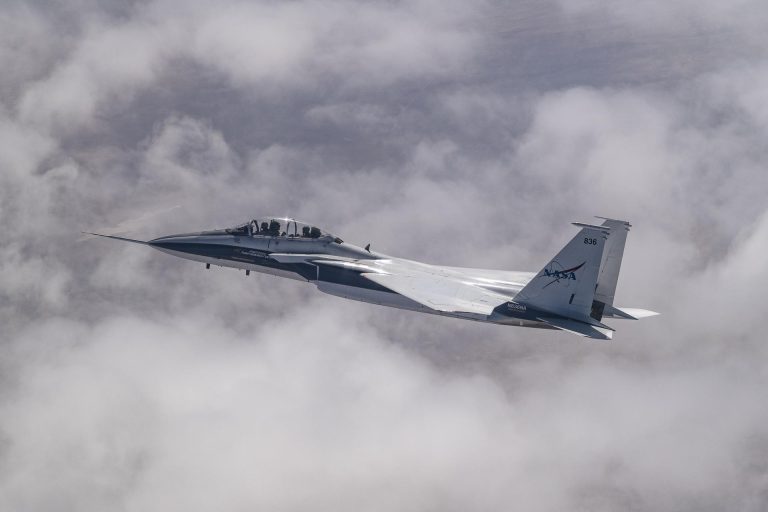NASA will soon test progress on a key tool for measuring the unique “thuds” its quiet X-59 supersonic research plane will emit in flight.
A Shock Detection Probe is a cone-shaped aerial data probe developed with specific features to capture the unique shock waves that the X-59 will produce. Researchers at NASA’s Armstrong Flight Research Center in Edwards, California, developed two versions of the probe to collect precise pressure data during supersonic flight. A probe is optimized for near-field measurements, capturing shock waves that occur very close to where the X-59 will generate them. The second shock detection probe will measure the middle of the field, collecting data at altitudes between 5,000 and 20,000 feet below the aircraft.
When a plane flies supersonic, it generates shock waves that propagate through the surrounding air, producing powerful sonic booms. The X-59 is designed to deflect these shock waves, reducing loud sonic booms to quieter thuds. During the test flights, an F-15B aircraft with a shock detection probe attached to its nose will fly with the X-59. The approximately 6-foot probe will continuously collect thousands of pressure samples per second, capturing changes in atmospheric pressure as it flies over the shock waves. Data from the sensors will be vital for validating computer models that predict the strength of shock waves produced by the X-59, the centerpiece of NASA’s Quesst mission.
“A shock-sensing probe acts as a source of truth, comparing predicted data with real-world measurements,” said Mike Frederick, the probe’s principal investigator at NASA.
For the near-field probe, the F-15B will fly just behind the in real time. The mid-field probe, intended for separate missions, will collect more useful data as the shock waves get closer to the ground.
The probes’ ability to capture small pressure changes is particularly important for the X-59, because its shock waves are expected to be much weaker than those of most supersonic aircraft. By comparing probe data to predictions from advanced computer models, researchers can better assess their accuracy.
“The probes have five pressure ports, one at the tip and four around the cone,” Frederick explained. “These ports measure changes in static pressure as the aircraft goes through shock waves, which helps us understand the shock characteristics of a particular aircraft.” The ports combine their measurements to calculate local pressure, speed and direction of airflow.
Researchers will soon evaluate improvements to the near-field shock detection probe during test flights, during which the probe, mounted on an F-15B, will collect data by tracking a second F-15 during supersonic flight. Improvements include making the probe’s pressure transducers – devices that measure air pressure on the cone – just 5 inches from its ports. Previous designs placed these transducers nearly 12 feet away, delaying recording time and skewing measurements.
Temperature sensitivity on previous designs also presented a challenge, causing fluctuations in accuracy based on changing conditions. To solve this problem, the team designed a heating system to keep the pressure transducers at a constant temperature during flight.
“The probe will meet the resolution and precision requirements of the Quesst mission,” Frederick said. “This project shows how NASA can take existing technology and adapt it to solve new challenges.”


